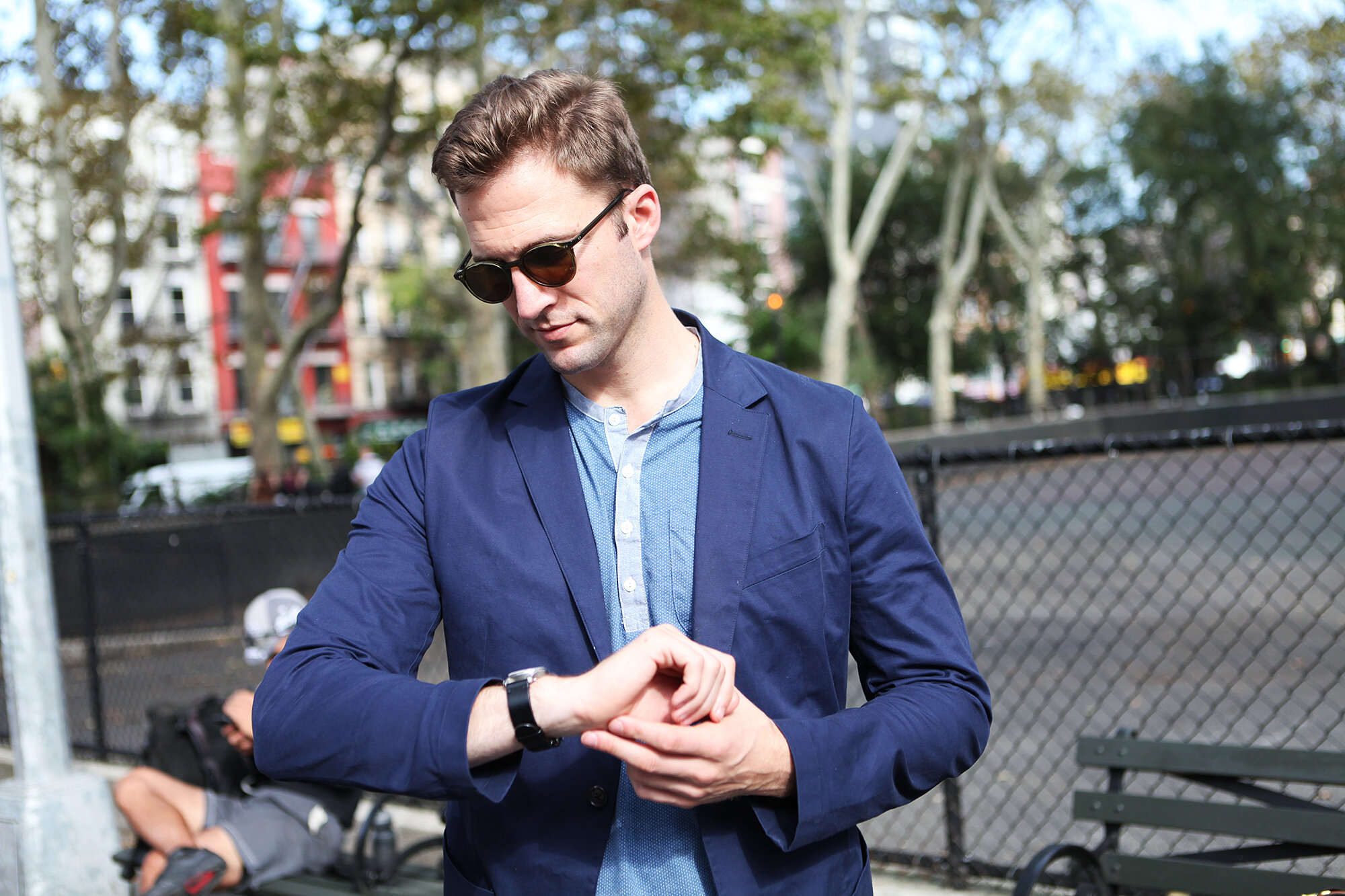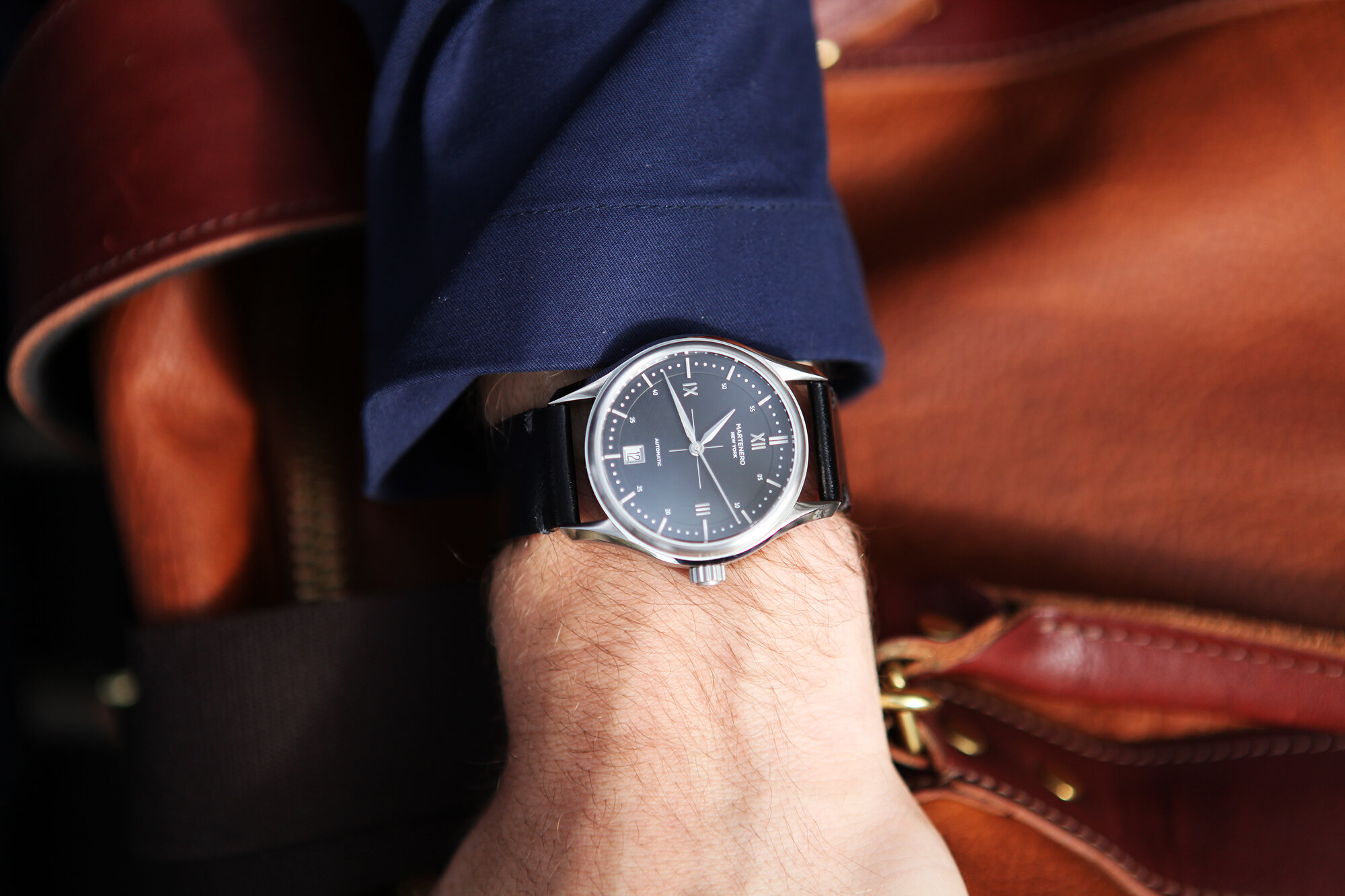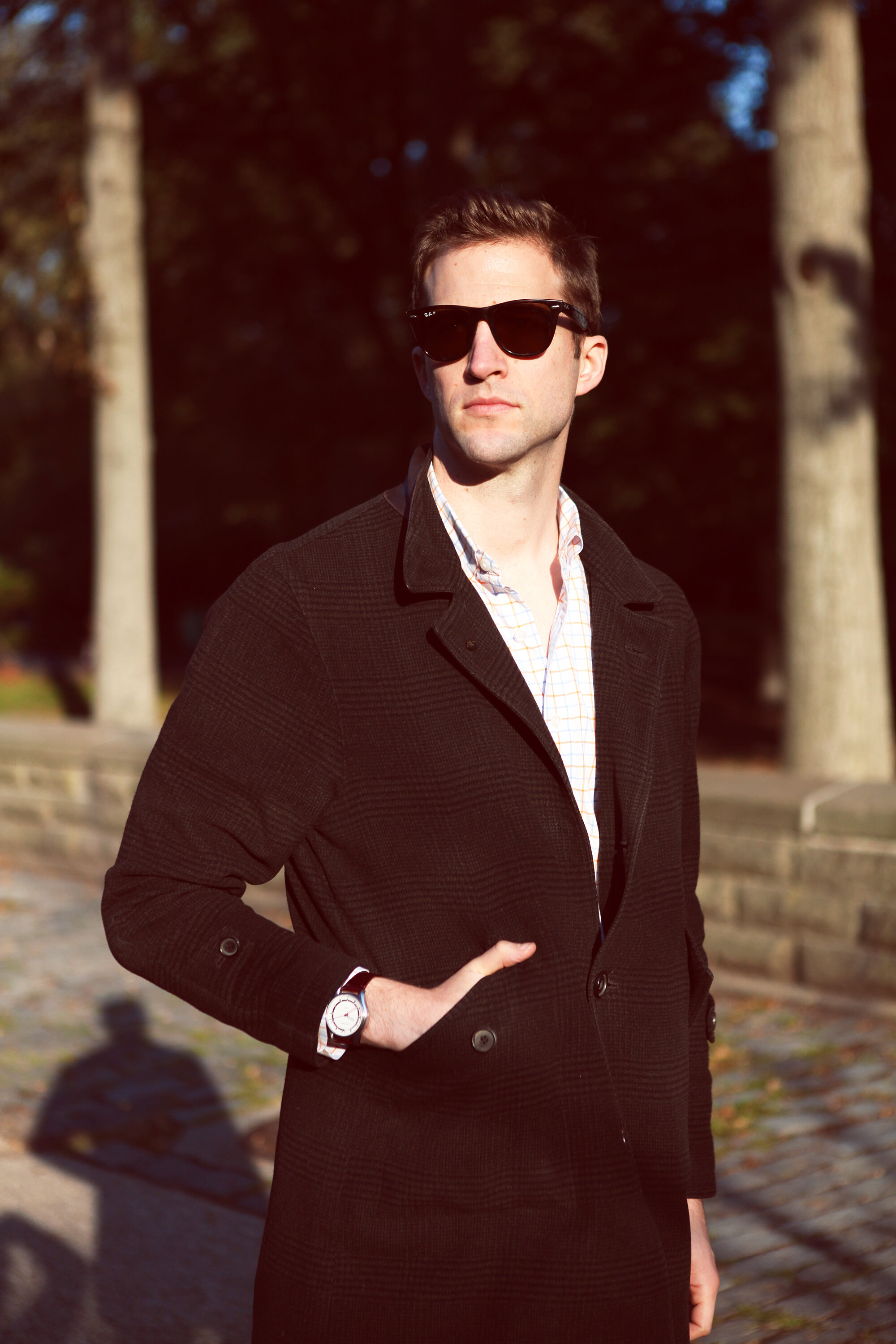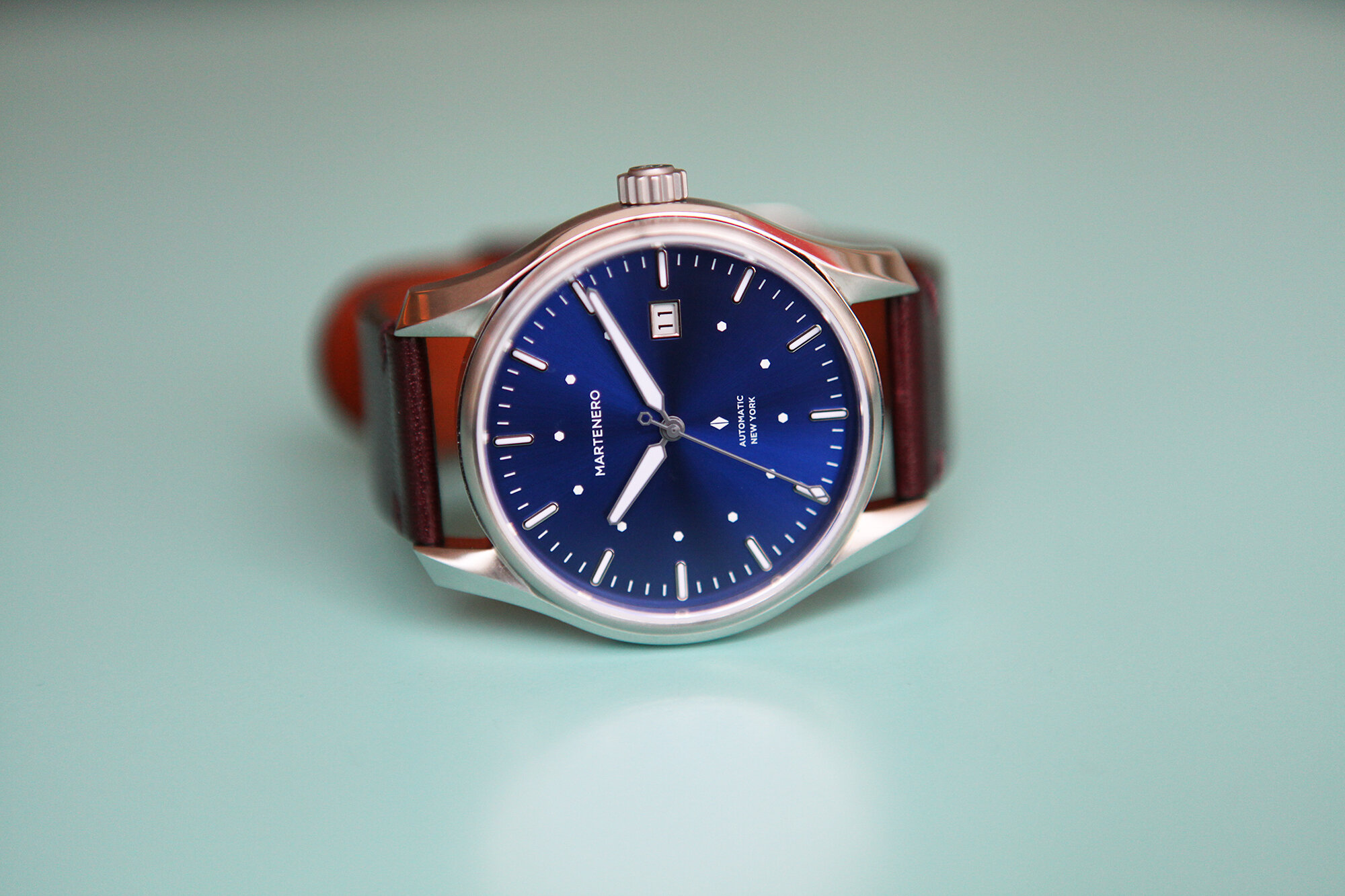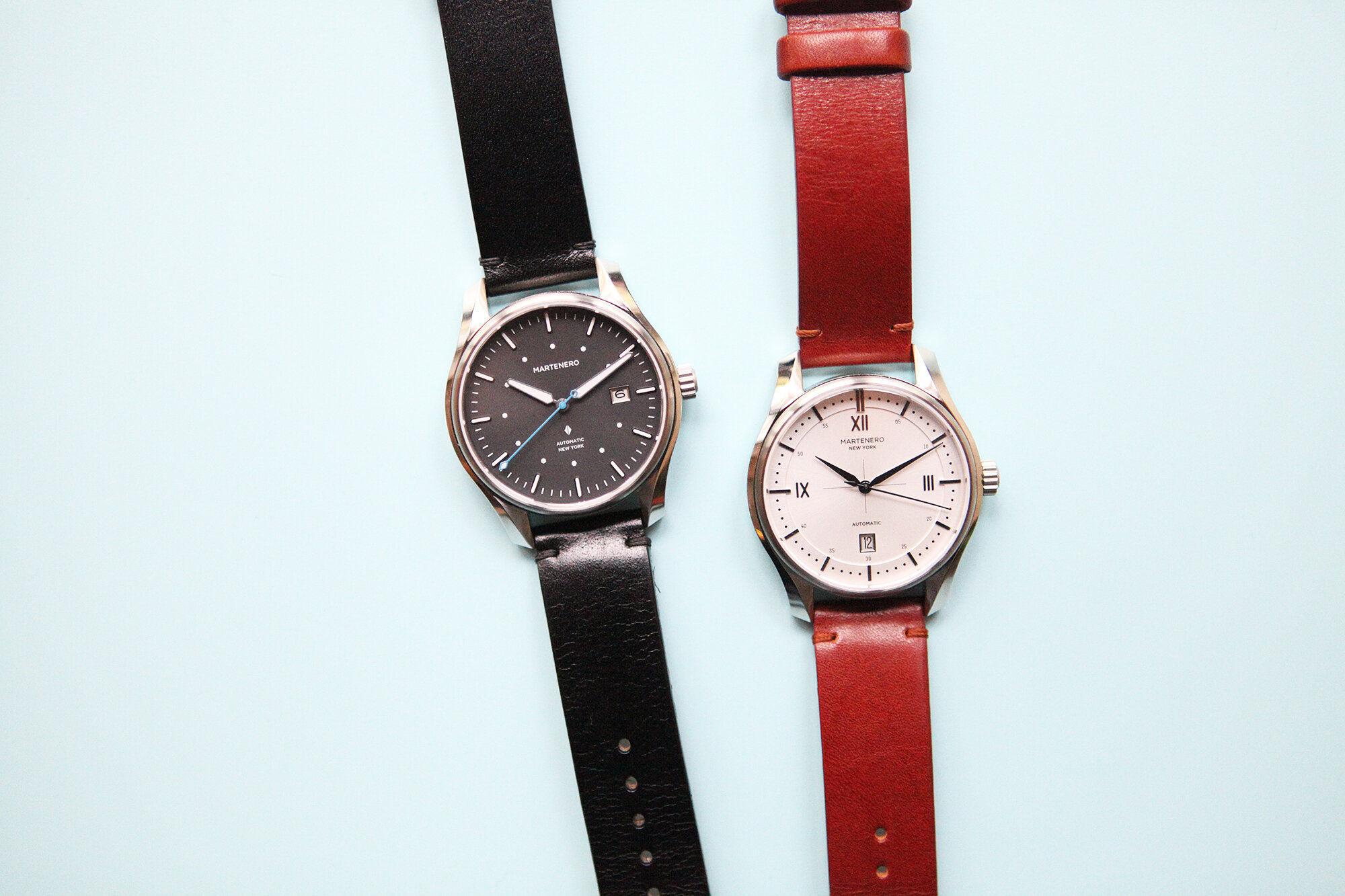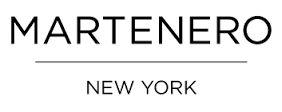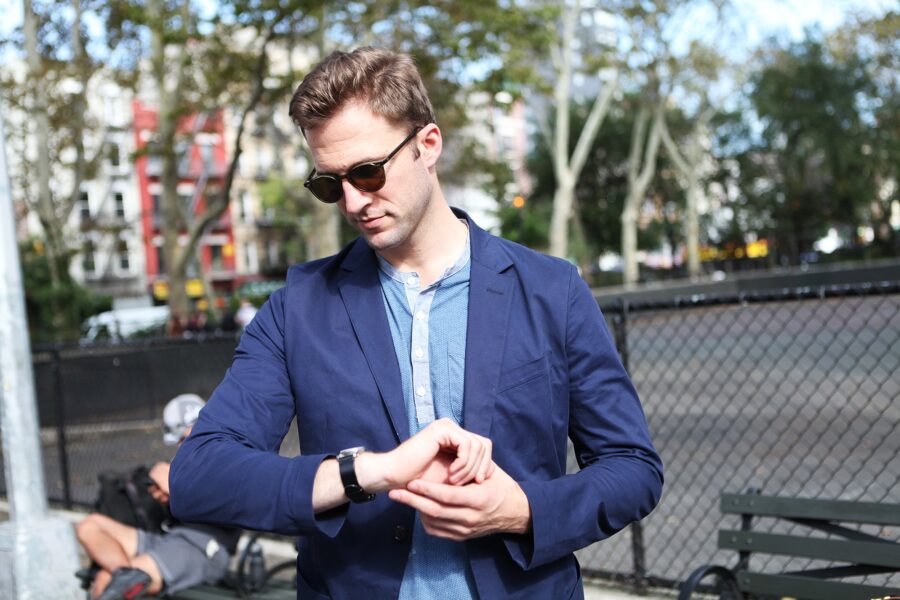
A Transparent Watch Brand: John Tarantino Of Martenero
Written by Kassia Binkowski, Contributing Editor to The Good Trade
Meet John Tarantino of Martenero
Some people are born with an itch and an obvious career path. Others of us stumble on it somewhere along the way. John Tarantino left a career in the real estate industry to follow his passion. Amateur collector turned successful entrepreneur, we sat down with John to learn more about his career switch, the challenges he’s faced along the way, and the transparent business he’s striving to build through Martenero.
As a creative with an eye for design and a stubborn conscious, I’m so impressed with your launch of a beautiful line of American-made watches. Tell me, what was the inspiration behind Martenero?
First off, thank you! From a design perspective, the first thing we were going for was a clean, minimal aesthetic. We wanted to get all of the details and proportions just right, and then add subtle design and color accents to really make the pieces unique. The goal was always to have an understated look rather than something that’s showy.
Another key part of what we do is that we allow a certain degree of customer choice when purchasing a watch. The idea is to allow the customer to match the watch to their own personal aesthetic, within the bounds of our design.
The amount of customization you afford customers is a refreshing twist on a timeless industry. Speaking of which, you built a business in an industry in which you had little professional experience. How did you set yourself up for success and what hurdles did you face along the way?
It’s true, I had absolutely no related work experience prior to starting Martenero, so it was a bit of an uphill battle. I started out by doing a lot of research on my own just to get more acquainted with the industry. From there, I did everything I could to build a professional network relevant to the company I was trying to create. Having a good knowledge base about the industry and a strong network was a great foundation for building this company.
There was no shortage of hurdles along the way. The biggest issue with a company like mine is finding the right manufacturing partners – if you don’t find the right partners, you have no shot of success. The next biggest challenge was simply getting the word out about the company since there are so many other options out there, and I’ve never had the luxury of a big marketing budget. I’ve managed to get the word out mainly through events and press opportunities, but it’s a constant battle.
Working under resource constraints can actually be a great catalyst for creativity. You’ve been able to produce some beautiful products without compromising your values. The fashion industry at large is full of opportunities to minimize your footprint and maximize your social impact. What impact can customers expect to make when they purchase a product from Martenero?
Our components are made all over the world – Japan, China, and the United States. Final assembly and testing is then done in New York where we’re based. The reason for the overseas production is that the manufacturing infrastructure to make watches domestically is very limited, though it’s slowly coming back which I think is an exciting development for the industry.
It’s important for us to have the final steps of quality control, assembly, and testing done locally because not only does it allows us to have complete control over the final product that we ship, but it’s also a logical first step toward manufacturing more of the components here in the US. We expect to manufacture more of the components domestically in the years ahead, and we’re already speaking with a handful of potential suppliers in the New York area about this. I think the biggest benefits of continually moving more of the production to the US (specifically the New York area) is the greater quality control that we will have over the product, as well as having more control over the methods and conditions of production.
I appreciate the transparency and agree there is enormous value – social and economic – to keeping production local. Tell us more about your own professional ambitions. Career changes are never easy, much less one from real estate to entrepreneurship. What inspired the switch and do you have any advice for other individuals looking to make the leap?
One reason for the switch was simply that I wanted to start a business of my own. I’d had several jobs as a traditional employee, and knew that I was ready to build my own company. I also loved watches, was a small-scale watch collector, and came up with a concept that I thought would be viable. The idea of creating a product that wasn’t already out there in the world, and that I thought people would enjoy, was very appealing.
As for advice, I’d say start with an idea or product that you’re interested in enough to focus on it for all of your working hours. From there, find out everything you can through your own research and start building a relevant network right away. This will allow you to learn more about what specific opportunities might exist in the industry, and also how to actually get the company off the ground.
There are more choices available to consumers than ever before, and we’re glad Martenero products are among the mix. Tell us, what values and standards do you look for when purchasing clothing and accessories from other businesses? With so many labels to choose from, what matters most to you?
I think it’s about doing everything right – product, pricing, branding, company mission. If you’re lagging in any of those categories you’re going to have problems. I think product and pricing are the first two things that companies have to get right – if those aren’t compelling, I’m not a customer. From there, an interesting trend in terms of company mission is added transparency in terms of production and operations. More customers want to know about what goes in to making the products they buy, and I’m a big fan of this trend. We get a lot of questions about this, which we answer individually, but we plan on being more transparent publicly about everything that goes in to making our products.
What’s next on your list for Martenero? Where do you want to go from here?
In terms of product, we have a new watch currently in the prototyping phase that will be released later this year. It’s a bit of a departure from our previous designs so I’m interested to see how people react to it. In addition, we’re tinkering with creating some related accessories that I think our existing and future customers will enjoy.
As far as production goes, we plan on continuing to build a New York-centric supply chain, as well as building out a transparency initiatives at the company.
Kassia Binkowski is a Contributing Editor at The Good Trade and the Founder of One Thousand Design. She grew up in Madison, WI and traveled her way around the world to Boulder, CO which she now calls home. Nestled against the Rocky Mountains, Kassia supports innovative organizations from Colorado to Kathmandu tell their stories of social change through writing, photography, and design. Kassia is an eternal optimist and forever a backroad wanderer.
